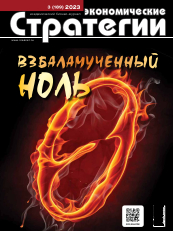Import Substitution: Domestic Devices for Molecular Genetic Analysis
DOI: 10.33917/es-3.189.2023.36-41
The analysis of the market of sequencing technologies was carried out, the factors accelerating and hindering its development were identified. Separate developments of equipment for molecular genetic analysis, carried out by the Institute for Analytical Instrumentation of the Russian Academy of Sciences in conjunction with LLC Sintol are presented in the article. The existing scientific and technical background and the potential of organizations allows for the rapid import substitution of a number of key instruments and devices for genetic research, including those with the necessary reagent base.
References:
1. Global DNA Sequencing: Research, Applied and Clinical Markets, available at: https://www.bccresearch.com/market-research/biotechnology/dna-sequencing-emerging-tech-applications-report.html#:~:text=The%20global%20market%20for%20DNA,the%20period%20of%202021-2026.
2. DNA Sequencing Market Size USD 16.81 Billion by 2030, available at: https://www.vantagemarketresearch.com/industry-report/dna-sequencing-market-1896.
3. Growth Trends, Report 2030, available at: https://www.strategicmarketresearch.com/market-report/dna-sequencing-market.
4. Whole Genome Sequencing cost 2023, available at: https://3billion.io/blog/whole-genome-sequencing-cost-2023#:~:text=The%20cost%20of%20 a%20human, today%20it%20is%20approximately%20%24600.
5. Kurochkin V.E., Alekseev Ya.I., Petrov D.G., Evstrapov A.A. Otechestvennyye pribory dlya molekulyarno-geneticheskogo analiza: razrabotki IAP RAN i OOO “Sintol” [Domestic devices for molecular genetic analysis: developments of the IAP RAS and LLC “Sintol»]. Izvestiya Rossiyskoy Voyenno-meditsinskoy akademii. 2021, vol. 40, no 3, pp. 69–74.
6. Genetic analyzer Nanofor® 05, available at: http://iairas.ru/nanofor05.php.













